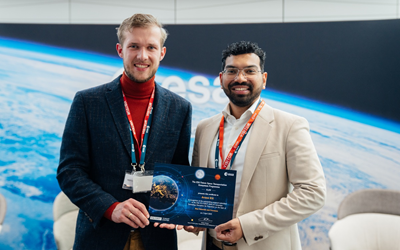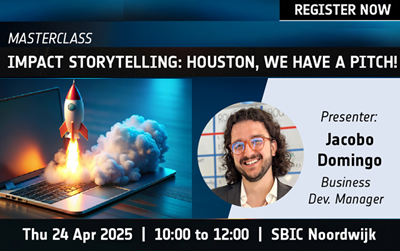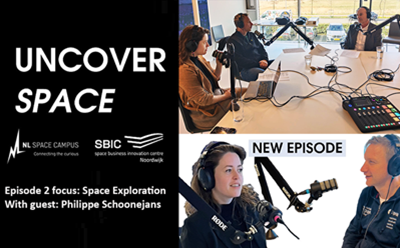Aardvark Sensing is enabling affordable soil classification that, in combination with satellite data, can offer better predictive capability for precision agriculture. Traditional methods for soil measurements are non-scalable and so the startup’s answer to this problem is to provide an end-to-end solution for the automation of soil sensing – using its unique robots. Participating in the programme of ESA’s Dutch business incubator (ESA BIC Noordwijk), the company is applying modern technologies for a rapid turnaround of 3D-printed autonomous robots and training artificial intelligence (AI) models on satellite data to measure a multitude of soil properties.
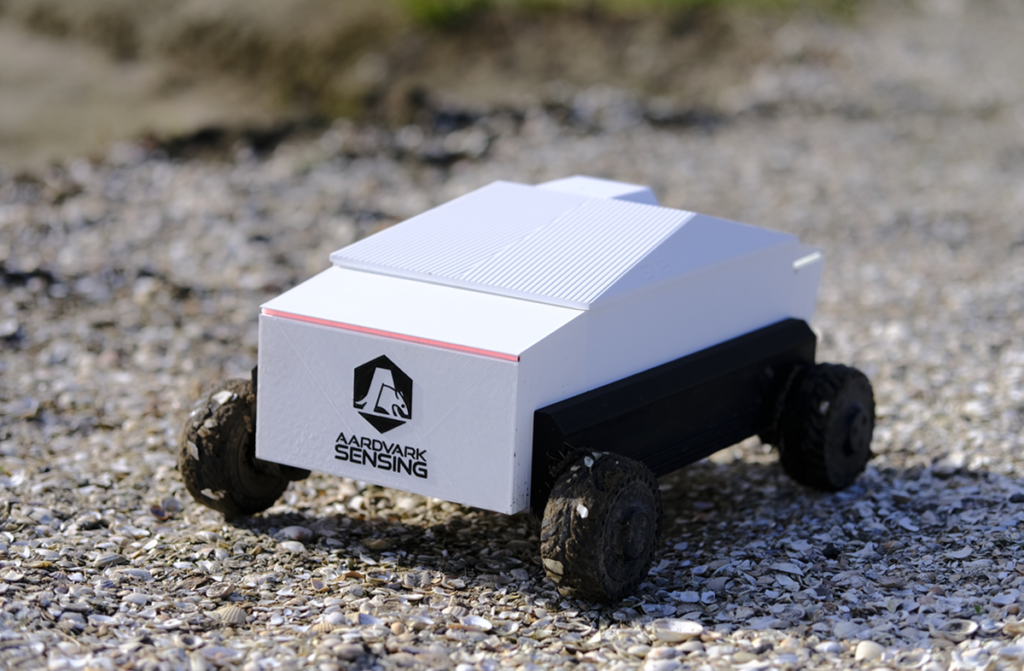
The Space Business Innovation Centre (SBIC) Noordwijk is the location of the Aardvark Sensing headquarters, as well as the co-working space for all ESA BIC startups that are incubated in the Netherlands. The striking building is ideally located on NL Space Campus, close to ESA’s European Space Research and Technology Centre (ESTEC) and across the road from the a large expanse of field that will soon be developed with various aspects of a space exploration hub as the campus develops (initial details here). If you have been to the campus recently, you might have spotted Aardvark’s founder Ilan Lewin testing his autonomous robot by driving it around on this grass terrain or along the shell paths that lead to the meeting space.
Since beginning incubation in November 2023, the startup has developed a number of robots that have all been fully 3D printed. Last month, Aardvark conducted the first drive tests of Serial Number 2 (SN2), using two types of interchangeable modular driving cassettes with small and big wheels. The purpose of the tests were to check the manoeuvrability of the robot in rough terrain and to map the operational limits of driving units. Next, by the end of April 2024, Aardvark robot SN3 will be tested driving autonomously to collect visual and ultrasound data that will later be used to teach it to avoid obstacles. It will be collecting multi-spectral images of the soil and mapping the plant biodiversity. We caught up with Ilan to find out more about his space related business.
How do you introduce your startup to new audiences?
Aardvark Sensing is focusing on making soil sensing affordable and scalable. Currently, there are multiple industries and research fields that require regular testing of soil. There are various sensors that can be used in the field to collect measurements, such as soil constitution, moisture, structure, minerals and nutrients, biodiversity, etc. However, the use of these sensors is very manual and, as such, is logistically hard to arrange, prone to mistakes and inconsistencies, experience heavy and, in general, expensive. In other words, soil measurements are non-scalable and this is what we want to change. We believe that inexpensive, autonomous robots are the solution for scalable sampling in many use cases.
What is your background?
I have an extensive and diverse technological background, from hardware, sensors and physics to algorithmics and data science, along with robotics, Internet of Things (IOT) and cloud computing. My bread and butter in the past 8 years has been in the integration of various sensors within a secure IOT platform. It was only natural for me to say: “Hey, the future of agriculture needs scalable sensing and I know how to do it.”
What steps did you take to get to ESA BIC?
I was already on the mailing list of the SBIC Noordwjk because I am a space fan, and one day I got an email that mentioned the ESA BIC programme. At that time, I was thinking a lot about peacetime landmine detection using robots, and after that, everything fell into place. I realised that robotic soil sensing is a much broader capability that is missing today and the technology is just ripe for this application. So, we are using modern CI/CD (continuous integration and continuous delivery/deployment), Raspberry Pi, 3D printing and artificial intelligence (AI) to create our robots for this purpose.
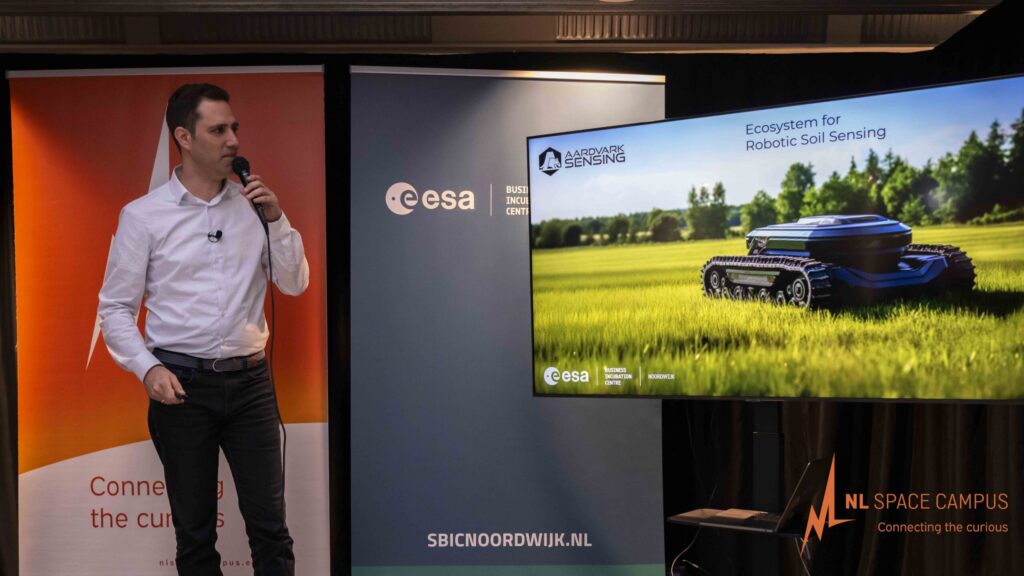
Can you explain about the space connection?
I see two different connections to space. The first is that our service will provide valuable ground truth data for both validation, calibration and training of AI models based on satellite data. Remote sensing only operates in the electro-optical domain, be it hyper-spectral imagery, radiometry or radar. This means that it is to some extent “skin deep” – it cannot directly measure many of the properties of the soil that we are interested in. Fortunately, there are many smart people and companies that use AI in conjunction with satellite data to make various predictions of what we want to know from what we see. These models depend, however, on ground truth data for calibration and training. The better the ground truth data, the better the predictions – and this is where we come into play. We are servicing the downstream.
The second space connection is our reliance on high-accuracy satellite positioning. Currently, we are using GPS with RTK (real-time kinetic) to arrive at an accurate positioning of up to 1 cm, which in some applications is very important. In the near future, we hope to be one of the early adopters of Galileo’s High Accuracy Service, which will allow us to be independent of RTK ground stations and, thus, be accurate anywhere on the globe.
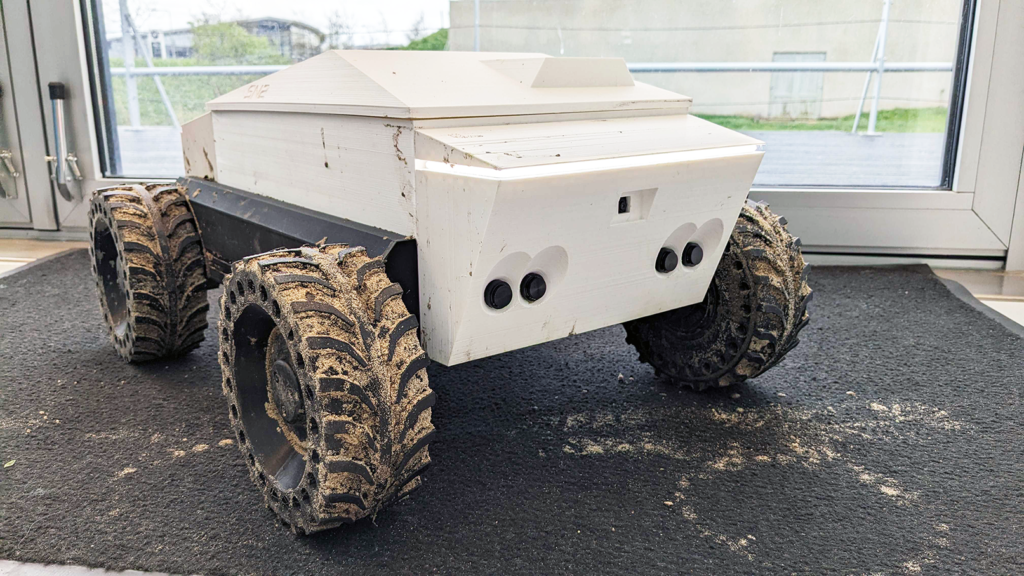
What problem is your solution addressing?
We are addressing the difficulties in conducting reliable soil sampling at scale. The problem stems from the fact that sensors are used in a very manual way, requiring correct use and good calibration. Most of all, they require a person to be at a certain point in the field at regular times, conducting multiple measurements – without making any mistakes. Anyone who has done such experiments knows how difficult this is to achieve. We want to solve this problem by removing those hurdles, delegating a low-cost robot to carry out the tests for us, repeatedly, day and night and in any weather.
Just 6 months ago, this startup was just a dream and now we have a robot that is driving and taking samples
ilan lewin
What is your focus during incubation?
Our technical focus while incubated at ESA BIC is to manufacture five or six generations of our prototype and minimal viable product (MVP). Since we are using 3D printing, commercial-of-the-shelf hardware and modern CI/CD methodologies, we have a new generation of our robot every one month, which is extremely fast compared to the traditional robotics industry.
Our business focus during incubation is finding those early evangelists – those customers that have a manifestation of the problem today and can readily benefit from the automation of their soil sampling, like research institutes that perform research in agriculture, environment and geology.
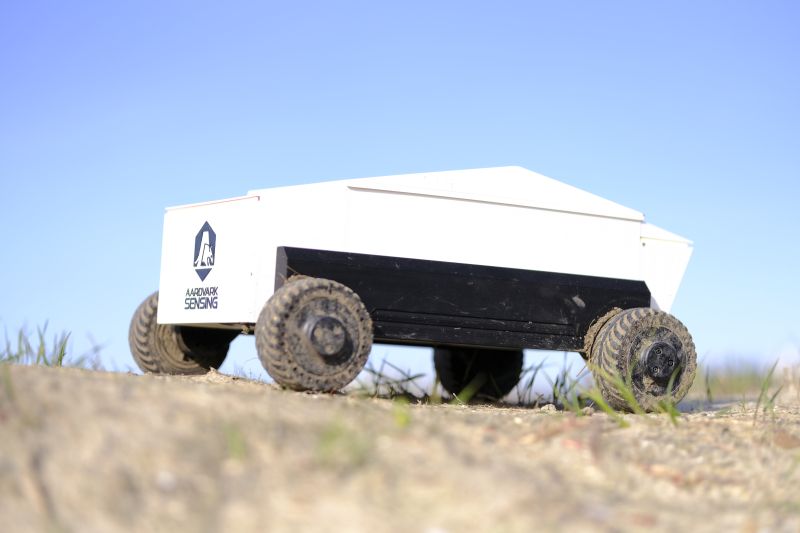
What aspects of the programme do you find useful?
I would say first and foremost that the affiliation with ESA is super useful. It opens many doors, because everyone loves space and everyone loves robots. The combination is a winner and generates interest and willingness to collaborate anywhere in the world. I also find that the expert support that ESA BIC affords us, such as the coach pool, and being at the heart of the NL Space Campus generates a very powerful network – and everything is super positive
What are your future ambitions for the company?
The real goal in the long term is to transform agriculture. The way there is still unknown but I definitely know where we will be in 5 and 10 years. Humanity needs to revolutionise its agriculture if it wants to be able to sustainably feed itself in the future. This revolution will be in the form of regenerative agriculture, agricultural methods that are much more scientific, knowledgeable and intelligent than those of today. And I know that robotic soil sensing is going to play an important part in this future.
Any words of encouragement for anyone considering applying to ESA BIC Noordwijk?
I am a person that constantly thinks of problem solving and technology. Technological vision plays a big part in my life but in most cases, so many ideas and visions remain in the drawer. ESA BIC is the push that you need to get something started. Just 6 months ago, this project was just a dream for me and now we actually have a robot that drives around and takes samples and we are talking with potential customers. Without ESA BIC, this would have probably still been in the dream phase. So yes, ESA’s business incubation centre right here so close to ESTEC is a great way to galvanise you into taking that first and most important step to realise your visionary dream.
ABOUT AARDVARK SENSING
Aardvark Sensing, based in the Netherlands and founded by Ilan Lewin, provides an end-to-end solution for the automation of soil sensing, using its unique robots. Operating in various terrain for months on-end without intervention, Aardvark robots collect valuable soil data for various applications, from the calibration of satellite data through soil quality measurement for agriculture to subsurface mapping. Carrying various sensing payloads on board, including spectrometers, cosmic ray neutron detectors, acoustic sonar, ground-penetrating radar and more, each robot gathers essential data on soil characteristics. In November 2023, the company joined the 2-year programme of the Dutch business incubation centre of the European Space Agency, ESA BIC Noordwijk. aardvark-sensing.com
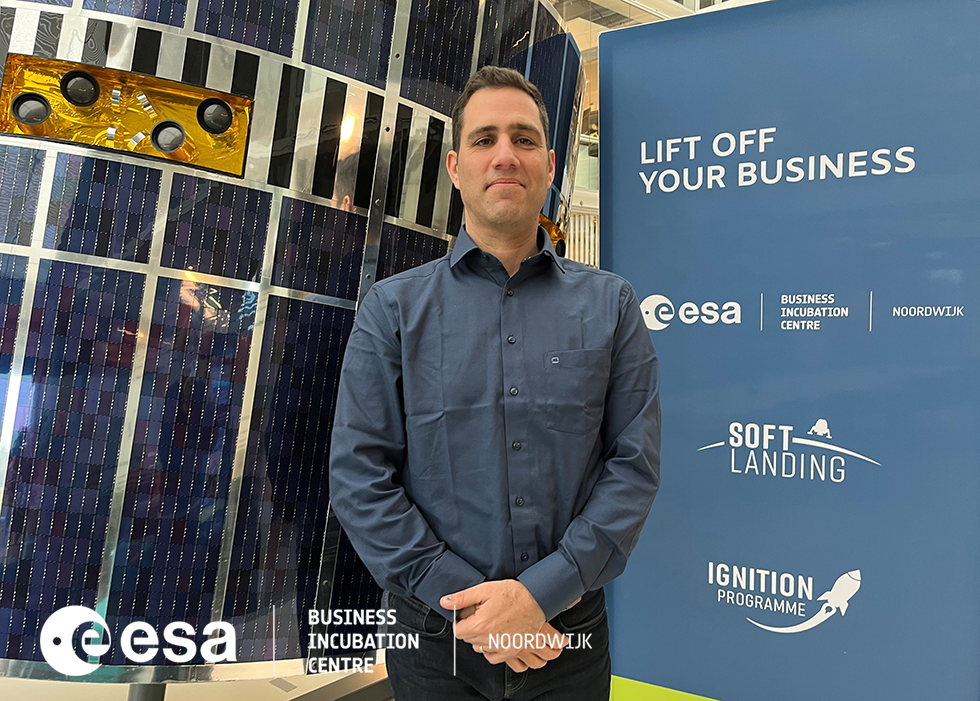
Validate your business plan and space connection!
Refine and validate your space business idea via our pre-incubation trajectory. The summer Ignition Programme takes place at SBIC & prepares you to apply to ESA BIC.

